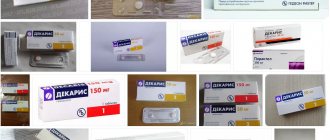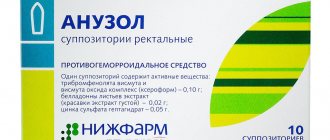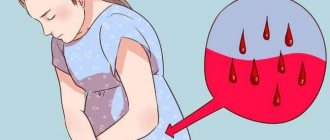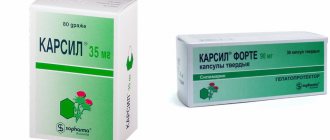Indications for use
Norfloxacin is prescribed for bacterial infections of the urinary system ( urethritis , cystitis , pyelonephritis ), genitals ( endometritis , cervicitis , prostatitis ), gastrointestinal tract (shigellosis, salmonellosis ), uncomplicated gonorrhea, and traveler's diarrhea . Used to prevent infectious diseases in patients suffering from granulocytopenia .
Locally, Norfloxacin is prescribed for conjunctivitis , keratitis , keratoconjunctivitis, corneal ulcer, blepharitis , blepharoconjunctivitis, meibomitis, dacryocystitis . The drug is used to prevent eye infections after extraction of a foreign body or conjunctiva from the cornea, before and after eye surgery, after damage by chemicals.
Norfloxacin is effective for external otitis, acute otitis media, chronic otitis media, and is prescribed for the prevention of infectious complications during surgical interventions on the organ of hearing.
Norfloxacin
Norfloxacin
(eng.
norfloxacin
) is a broad-spectrum antibacterial agent from the group of 2nd generation fluoroquinolones. Synthetic pyridone carboxylic analogue of nalidixic acid. Norfloxacin acts on the bacterial enzyme DNA gyrase, which ensures supercoiling and, as a consequence, stability of bacterial DNA. Destabilization of the DNA chain leads to the death of microorganisms.
Norfloxacin is a chemical substance
Norfloxacin is a white or pale yellow crystalline powder. Chemical name of norfloxacin: 1-ethyl-6-fluoro-1,4-dihydro-4-oxo-7-(1-piperazinyl)-3-quinolinecarboxylic acid. The empirical formula of norfloxacin is C16H18FN3O4. Molecular weight of norfloxacin: 319 g/mol. It is poorly soluble in water, but solubility depends significantly on the acidity of the water and increases markedly at pH<5 and pH>10.
Norfloxacin is a drug
Norfloxacin is the international nonproprietary name (INN) of the drug.
According to the pharmacological index, norfloxacin belongs to the group “Quinolones/fluoroquinolones”. According to ATC, norfloxacin is included in the group “J01 Antibacterial drugs for systemic use”, the subgroup “J01MA Fluoroquinolones” and has the code J01MA06. In addition, in the subgroup “J01RA Combinations of antibacterial drugs” there is a code “J01RA13 Norfloxacin and tinidazole”. Eye drops have the ATC code “S01AE02 Norfloxacin”, which belongs to the group “S01 Drugs for the treatment of eye diseases”, and according to the pharmacological index they can be classified into two groups: “Quinolones/fluoroquinolones” and “Ophthalmic agents”.
“Norfloxacin” is also the trade name of the drug.
Indications for use of norfloxacin
Norfloxacin tablets are indicated for infectious and inflammatory diseases caused by bacteria sensitive to it:
- gastroenteritis caused by salmonella or shigella
- acute and chronic diseases of the urinary tract, such as cystitis, pyelonephritis and urethritis
- genital infections (chronic prostatitis, endometritis, cervicitis)
- uncomplicated gonorrhea,
and also for the prevention of: travelers' diarrhea, recurrence of urinary tract infections, sepsis in patients with neutropenia.
Norfloxacin for topical use is indicated for:
- ophthalmological diseases: conjunctivitis, keratitis, corneal ulcer, blepharitis, dacryocystitis, acute meibomitis
- prevention of eye infections after removal of a foreign body from the cornea or conjunctiva, after damage by chemical agents, before and after eye surgery
- otorhinolaryngological diseases: otitis externa, acute and chronic otitis media
- prevention of infectious complications during surgical interventions on the hearing organs
Microorganisms against which norfloxacin is active or not active
Norfloxacin is active against:
- gram-negative bacteria: Citrobacter spp
.
(including Citrobacter diversus, Citrobacter freundii
),
Enterobacter spp
.
(including Enterobacter cloacae
),
Escherichia coli, Klebsiella spp.
(including
Klebsiella aerogenes, Klebsiella pneumoniae, Klebsiella oxytoca, Klebsiella rhinoscleromatis
),
Neisseria gonorrhoeae, Neisseria meningitidis, Proteus mirabilis, Proteus vulgaris, Pseudomonas aeruginosa, Pseudomonas fluorescens, Pseudomonas stutzeri, Serratia spp
.
(including Serratia marcescens, Serratia marcescens
),
Salmonella spp.
(including
Salmonella typhi
),
Shigella spp., Yersinia spp.
(including
Yersinia enterocolitica
),
Haemophilus aegyptius, Haemophilus ducreyi, Haemophilus influenzae, Morganella morganii, Providencia spp.
(including
Providencia alcalifaciens, Providencia rettgeri, Providencia stuartii
),
Acinetobacter calcoaceticus, Aeromonas hydrophila, Edwardsiella tarda, Pantoea agglomerans, Hafnia alvei, Vibrio cholerae, Vibrio parahaemolyticus - gram-positive bacteria: Enterococcus faecalis, Staphylococcus aureus, Staphylococcus epidermidis, Staphylococcus saprophyticus, Staphylococcus warneri, Streptococcus agalactiae, Bacillus cereus
How to use norfloxacin
Depending on the indications for use and dosage form, norfloxacin is administered orally or topically. Norfloxacin is taken orally one hour before or two hours after meals with a sufficient amount of liquid. The average recommended dose is 400 mg 2 times a day. The duration of therapy is from 7 to 14 days. If necessary, longer therapy is carried out.
FDA warning about serious side effects of fluoroquinolones
On July 26, 2021, the FDA issued a warning that fluoroquinolones, namely ciprofloxacin, extended-release ciprofloxacin, levofloxacin, moxifloxacin, gemifloxacin and ofloxacin, approved for use in the United States, have a large number of serious side effects when used systemically, including: inflammation of tendon tissue, tendon rupture, numbness or tingling, muscle weakness, muscle pain, joint pain, swollen joints, anxiety, depression, hallucinations, mental confusion, suicidal thoughts, exacerbation of myasthenia gravis, rash, sunburn, abnormal, fast or strong heartbeat, severe diarrhea.
The FDA notes that the risks of using fluoroquinolones in the treatment of acute sinusitis, bronchitis, and uncomplicated urinary tract infections most often outweigh their potential benefits. At the same time, it is emphasized that in the treatment of anthrax, plague, and bacterial pneumonia, the benefits of using fluoroquinolones are beyond doubt.
The FDA considers an overall reduction in fluoroquinolone consumption to be important.
Use of norfloxacin during pregnancy, breastfeeding and children
Pregnant women should only take norfloxacin if absolutely necessary.
Norfloxacin passes through the placenta. Norfloxacin FDA Fetal Category C (animal studies have shown adverse effects on the fetus and there have been no adequate studies in pregnant women, but the potential benefits associated with this drug may justify its use despite the risks). There are no precise data on the effects of norfloxacin on infants during treatment with norfloxacin in breastfeeding mothers, therefore it is recommended to stop either breastfeeding or taking norfloxacin.
The safety and effectiveness of norfloxacin in children under 18 years of age have not been established.
Publications for healthcare professionals regarding the use of norfloxacin
- Zimmerman Ya.S., Telyaner I.I. The concept of the pathogenesis of peptic ulcer and the prospects for its cure // RZHGGK. – 1998. – No. 3. – p. 35 – 41.
Norfloxacin, the first drug from the fluoroquinolone group proposed for use in the early 80s, primarily for the treatment of urinary tract infections (UTIs), has consistently maintained its high therapeutic efficacy for 20 years.
After a single oral dose of 200 or 400 mg, the concentration of norfloxacin in the urine after 1–2 hours is at the level of 120–400 mg/l and after 24 hours is another 10–22 mg/l, which significantly exceeds not only inhibitory, but also bactericidal concentrations against most major UTI pathogens. Multicenter studies of the effectiveness of norfloxacin in outpatient practice for urinary tract infections, conducted in Russia, showed that the drug in doses of 400 mg 2 times a day for 7 days provides cure for patients in 78.2% of cases and improvement in 20.0% of patients . Elimination of infectious agents was achieved in 90.9%, persistence was observed in 3.9% and superinfection in 5.2% of cases (Pushkar D.Yu. et al., 2002). Norfloxacin is a well-studied antibiotic with proven clinical and bacteriological effectiveness, and safety of use for uncomplicated urinary tract infections. A distinctive feature of norfloxacin from other fluoroquinolones is its targeted local effect on the urinary tract - the concentration of the drug in urine is tens of times higher than the MIC 90 of E. coli, the main causative agent of uncomplicated urinary tract infection. The antimicrobial effect of the drug is directed against the main causative agents of urinary tract infections, while the effect on the normal microflora of the intestines and vagina is absent or so minimal that it has no negative consequences. In addition, norfloxacin suppresses the intestinal reservoir of uropathogenic E. coli, reducing the number of relapses after therapy. It was found that with a 3-day treatment regimen with norfloxacin 400 mg 2 times a day, the elimination of bacteria and the clinical effect occur on days 5-9 after treatment in 83–98% of patients. It should also be noted that in patients with acute cystitis, the results of comparative studies indicate that there are no advantages of ciprofloxacin compared to norfloxacin: the clinical effectiveness of the drugs is 91.2 and 93.8%, respectively, bacteriological - 91.2 and 91.9%, statistically significant differences there is no difference between these indicators. In addition to antibiotic therapy, in order to quickly reduce the severity of symptoms of the disease in acute cystitis, it is advisable to drink plenty (2–2.5 liters per day) and prescribe analgesics: ibuprofen, diclofenac, paracetamol, phenazopyridine, etc. (Lokshin K.L., 2006) .
On the website gastroscan.ru in the literature catalog there is a section “Antibiotics used in the treatment of gastrointestinal diseases”, containing articles on the use of antimicrobial agents in the treatment of diseases of the digestive tract.
Side effects that occur when taking norfloxacin
Norfloxacin may cause the following side effects: nausea, diarrhea, heartburn, abdominal pain, anorexia, bitterness in the mouth, tachycardia, heart rhythm disturbances, decreased blood pressure, sleep disorders, headache, dizziness, feeling tired, irritability, skin rash, itching , Quincke's edema, interstitial nephritis.
Trade names of drugs with the active substance norfloxacin
In Russia, medications with the active substance norfloxacin are approved for use: Loxon-400, Nolitsin, Norbaktin, Norilet, Normax, Noroxin, Norfacin, Norfloxacin, Renor, Sofasin, Chibroxin, Yutibid.
In the United States, norfloxacin was marketed for systemic use by Merck Sharp & Dohme Corp. under the brand name Noroxin. Production has currently been discontinued. No other formulations of norfloxacin are approved for systemic use in the United States.
US English instructions (pdf):
- For patients: “NOROXIN (norfloxacin). Tablets. Medication Guide,” Merck Sharp & Dohme Corp., July 2021.
- For healthcare professionals (now withdrawn!): “NOROXIN (norfloxacin). Tablets,” Merck Sharp & Dohme Corp., September 2008.
general information
Norfloxacin has contraindications, side effects and application features; consultation with a specialist is necessary. Back to section
Contraindications
Norfloxacin is not prescribed for intolerance to fluoroquinolones, pregnancy, breastfeeding, lack of glucose-6-phosphate dehydrogenase, childhood and adolescence (up to 18 years).
Use with caution for atherosclerosis of cerebral vessels, epileptic syndrome, renal failure, hepatic system, epilepsy .
Side effects
Digestive system: nausea, bitterness in the mouth , diarrhea, loss of appetite, epigastric pain, increased activity of “liver” transaminases, vomiting, dyspeptic disorders; , pseudomembranous enterocolitis develops
Urinary system: glomerulonephritis , albuminuria, crystalluria, polyuria, dysuria, hypercreatininemia, urethral bleeding.
Nervous system: dizziness, headache, fainting, hallucinations , insomnia. Cardiovascular system: arrhythmia, vasculitis , drop in blood pressure, tachycardia.
Sense organs (for local use): photophobia, chemosis, conjunctival hyperemia, pain and burning in the eye, blurred vision.
Musculoskeletal system: tendon ruptures, tendinitis , arthralgia .
Hematopoietic organs: decreased hematocrit , decreased leukocyte count, eosinophilia.
Allergic reactions are possible: swelling, itching , Stevens-Johnson syndrome (exudative erythema of a malignant nature), urticaria . On other organs and systems – candidiasis .
Buy Norfloxacin film-coated tablets 400 mg No. 10 in pharmacies
Instructions for use Norfloxacin tablet p.o. 400 mg No. 10 Dosage forms tablets 400 mg Group Antimicrobial - fluoroquinolones International nonproprietary name Norfloxacin Composition Active substance - Norfloxacin. Manufacturers Obolensk pharmaceutical enterprise (Russia) SYNONYMS Anquin, Bactinor, Girablok, Quinolox, Loxon 400, Loxon-400, Negaflox, Nolitsin, Norbactin, Norilet, Normax, Noroxin, Norfacin, Norflox, Renor, Sophasin, Spectrama, Chibroxin, Yutibid
PHARMACOLOGICAL ACTION Has an antibacterial effect. Inhibits bacterial DNA gyrase, which ensures supercoiling and stability of DNA, disrupts protein synthesis and leads to the death of microorganisms. Well absorbed from the gastrointestinal tract, food delays absorption. Therapeutic concentration is achieved in plasma 1 hour after oral administration. Distribution: kidney parenchyma, testicles, seminiferous tubule fluid, prostate gland, uterus, abdominal and pelvic organs, bile, breast milk. Permeability through the BBB and placental barrier is high. Metabolized to a small extent in the liver and excreted in the urine. Excreted in urine, feces, and excreted in the form of metabolites. Active against Staphylococcus aureus, Staphylococcus epidermidis, Escherichia coli, Klebsiella, Enterobacteriaceae, Salmonella, Shigella, Chlamydia and Legionella, etc. Most strains of ureoplasma, anaerobic bacteria, Peptococcus, etc. are not sensitive.
INDICATIONS FOR USE Urinary tract infections (cystitis, pyelonephritis, urethritis, uncomplicated gonorrhea), genital infections (prostatitis, endometritis, cervicitis). Gastrointestinal tract (salmonellosis, shigellosis, traveler's diarrhea), eyes; prevention of infections in patients with granulocytopenia.
CONTRAINDICATIONS Hypersensitivity, end-stage chronic renal failure, glucose-6-phosphate dehydrogenase deficiency, pregnancy, lactation, children and adolescents under 15 years of age.
SIDE EFFECTS Dyspeptic syndrome (anorexia, nausea, vomiting, bitterness in the mouth, abdominal pain, diarrhea), dysfunction of the urinary system (glomerulonephritis, dysuria, polyuria, proteinuria, urethral bleeding, etc.), central nervous system (headache, dizziness, insomnia , hallucinations, fainting), cardiovascular system (heart rhythm disturbances, arterial hypotension), visual organs (burning and pain in the eye, conjunctival hyperemia, chemosis, photophobia), musculoskeletal system (tendinitis, tendon ruptures, arthralgia), vasculitis , pseudomembranous colitis, dysbacteriosis, candidiasis, Steven-Johnson syndrome, leukopenia, eosinophilia, decreased hematocrit, transient increase in liver enzymes in the blood serum, allergic reactions (itching, urticaria, edema).
INTERACTION Simultaneous use of antacids containing aluminum or magnesium hydroxide, as well as preparations containing iron and zinc, slows down absorption. The appointment interval between them is at least 3 hours. Reduces the clearance of theophylline by 25%, increases the concentration in the blood of indirect coagulants, cyclosporine. Simultaneous administration with drugs that have the ability to lower blood pressure can cause severe hypotension, with drugs that reduce the convulsive threshold of the brain - epileptiform seizures. Reduces the effect of nitrofurans.
OVERDOSE Symptoms: dizziness, nausea, vomiting, drowsiness, cold sweat, convulsions. Treatment: gastric lavage, adequate hydration therapy with forced diuresis, prescription of symptomatic medications.
SPECIAL INSTRUCTIONS Do not use for atherosclerosis of cerebral vessels, cerebrovascular accident, epilepsy and convulsive syndrome, impaired renal and liver function. During the treatment period, patients should receive a sufficient amount of fluid. Monitoring of the state of the coagulation system is required. With the simultaneous administration of barbiturates and anesthetics, heart rate, blood pressure, and ECG indicators should be monitored.
Instructions for use of Norfloxacin (Method and dosage)
Norfloxacin tablets, instructions for use
Orally: for cystitis without complications - 400 mg twice a day for 7 - 10 days; for infectious diseases of the urinary tract - within 3-7 days; for chronic recurrent urinary tract infections - up to 12 weeks.
For acute bacterial gastroenteritis – 5 days; for pharyngitis , cervicitis, proctitis, acute gonococcal urethritis - 800 mg once; for typhoid fever - 400 mg of the drug three times a day for 14 days.
As a prophylactic agent: against sepsis – 400 mg twice a day; against bacterial gastroenteritis – 400 mg once a day; against travelers' diarrhea - 400 mg of the drug the day before departure and throughout the trip (no more than 21 days); against relapses of infectious diseases of the urinary system - 200 mg of Norfloxacin per day.
In patients with impaired renal function with CC greater than 20 ml per minute, no dosage adjustment is required.
Patients on hemodialysis, as well as those with CC less than 20 ml per minute (or serum creatinine above 5 mg per 100 ml), are prescribed half the therapeutic dose twice a day or the full dose once a day.
Norfloxacin drops, instructions for use
Locally: 1 or 2 drops into the affected ear or eye 4 times a day. Depending on the level of infection, the first dose may be increased to 2 drops every two hours.
Directions for use and doses
For acute infectious processes of the eye, the drug is prescribed conjunctivally, 1-2 drops with an interval of 15 - 30 minutes, then the frequency of instillations decreases.
In the treatment of moderately severe infectious processes, Norfloxacin solution is prescribed 2 to 6 times daily.
For the treatment of trachoma (acute and chronic), the drug is prescribed 2 drops 2 - 4 times daily, for up to 2 months.
After the symptoms of the infectious process disappear, it is recommended to continue using Norfloxacin solution for another 48 hours.
Interaction
of theophylline by 25% . Increases the concentration of cyclosporine and indirect anticoagulants in the blood serum. Reduces the effect of nitrofurans .
The simultaneous use of antacids with magnesium and aluminum hydroxide , as well as drugs with sucralfate , negatively affects the absorption of Norfloxacin - there should be an interval of at least 4 hours between taking these drugs.
Simultaneous use of Norfloxacin with drugs that lower the epileptic threshold can provoke the development of epileptic seizures.
The simultaneous use of Norfloxacin and drugs that are potentially capable of lowering blood pressure can lead to a sharp decrease in blood pressure. Therefore, in such cases, as well as with the simultaneous use of barbiturate-containing and other drugs for general anesthesia, it is necessary to monitor the pulse, blood pressure level, and heart function.
Pharmacological properties
Norfloxacin is an antimicrobial drug of the fluoroquinolone group. Its action is based on suppressing the activity of DNA gyrases in bacterial cells and bacterial DNA replication. The wide spectrum of antimicrobial action that the drug has applies to gram-positive and gram-negative microorganisms: Klebsiella spp., Escherichia coli, Proteus spp., Enterobacter spp., Citrobacter spp., Acinetobacter spp., Serratia spp., Providencia spp., Pseudomonas aeruginosa, Neisseria gonorrhoeae., Haemophilus influenzae., Neisseria meningitidis., Salmonella and Schigella, Campylobacter. Enterococcus and Acinetobacter are insensitive to the action of the drug, anaerobic bacteria are not sensitive at all.
The onset of action of the drug occurs in the first hour after its instillation. It is eliminated from the body to a greater extent by the kidneys, the half-life is 3 - 4 hours.
special instructions
During treatment with Norfloxacin, direct exposure to sunlight should be avoided and it is recommended to take plenty of fluids. Particular care should be taken when driving vehicles, operating complex mechanisms, and performing work that requires high concentration and rapid psychomotor reactions (especially in the case of simultaneous intake of ethanol).
During therapy, an increase in the prothrombin index ; During surgery, it is necessary to constantly monitor the level of blood clotting.
Norfloxacin 200 mg and 400 mg, tablets
Hypersensitivity. After taking a single dose of the drug, hypersensitivity reactions are possible, including anaphylactic and anaphylactoid reactions, life-threatening conditions. Stop taking the medicine immediately, inform your doctor immediately or call an ambulance!
Pseudomembranous colitis. If you suspect pseudomembranous colitis (loose stools for a long time, possibly with blood or mucus in it), you should immediately stop taking it and immediately consult a doctor for appropriate treatment! You should not use medications that inhibit intestinal motility.
Central nervous system. It is known that quinolones can lower the seizure threshold and initiate seizures. Use with caution in patients with central nervous system diseases that provoke seizures. Cases of polyneuropathy (pain, burning, anxiety, tinnitus, muscle weakness, sensitivity disorders, including tactile, pain, temperature, vibration and muscle-articular) have been reported. If these phenomena occur, stop taking the drug! Inform your doctor immediately!
The cardiovascular system. Since the use of norfloxacin is associated with cases of prolongation of the QT interval on the ECG, caution must be exercised when treating patients at risk of developing arrhythmia: congenital prolongation of the QT interval; simultaneous use of class IA and III antiarrhythmic drugs, antidepressants, macrolides, antipsychotics; electrolyte disturbances; women and elderly patients are more sensitive; heart diseases.
Musculoskeletal system. Norfloxacin should not be used in patients with tendon diseases or disorders due to previous use of quinolones. If it is necessary to treat severe infectious diseases in such patients, a microbiological study and assessment of the risk-benefit ratio are carried out. Inflammation or tendon rupture may occur, especially in elderly patients or those concomitantly taking corticosteroids. If there are any signs of this disease (swelling, inflammation), stop taking the drug and immobilize the affected limb. Use with caution in patients with myasthenia gravis.
Photosensitivity. Patients taking norfloxacin should avoid direct exposure to sunlight and UV radiation.
Syphilis. Norfloxacin is not indicated for the treatment of syphilis. Antimicrobial drugs used in high doses for a short period of time to treat gonorrhea may mask or delay the onset of symptoms of developing syphilis. All patients with gonorrhea should undergo a serological test for syphilis at the time of diagnosis, and again (3 months later) after the prescription of norfloxacin.
Surgical reactions. Warn your doctor about taking norfloxacin: monitoring the state of the blood coagulation system is recommended (an increase in the prothrombin index is possible).
Glucose-6-phosphate dehydrogenase deficiency. The development of hemolytic reactions is possible. The drug is not prescribed to such patients, except in cases where the potential benefit outweighs the possible risk.
Excipients. Do not take in cases of congenital galactose intolerance and Lapp lactase deficiency or malabsorption of glucose and galactose (contains lactose).
General information. Use with caution for atherosclerosis of cerebral vessels, cerebrovascular accidents, epilepsy and convulsive syndrome, impaired renal and liver function.
Norfloxacin price, where to buy
The price of Norfloxacin in 400 mg tablets is approximately 115-140 rubles per package No. 10.
5 ml eye drops cost 175 rubles.
- Online pharmacies in RussiaRussia
- Online pharmacies in UkraineUkraine
ZdravCity
- Norfloxacin tablets p.p.o.
400 mg 10 pcs. JSC Obolenskoe farm. enterprise 172 rub. order - Norfloxacin tablets p.p.o. 400 mg 20 pcs. JSC Obolenskoe farm. company
RUB 292 order
- Norfloxacin tab. p/o captivity. 400 mg No. 10Ozon LLC
RUB 156 order
- Norfloxacin tab. p/o captivity. 400 mg No. 20Ozon LLC
260 rub. order
- Norfloxacin tab. p/o captivity. 400mg 20pcsOzon LLC
RUB 309 order
Pharmacy Dialogue
- Norfloxacin (tab.p/vol. 400 mg No. 10) Obolenskoye pharmaceutical representative.
RUB 154 order
- Norfloxacin tablets 400 mg No. 20 Obolenskoe pharmaceutical company.
RUB 283 order
- Norfloxacin (tab.p.pl/vol. 400 mg No. 20) Ozone LLC
147 RUR order
show more




